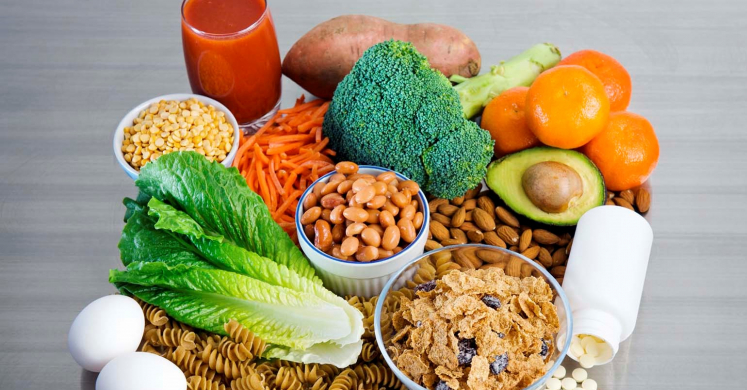Blog

Folate: How to Make Sure You’re Getting Enough Prepregnancy
Let’s start with the basics: What is folate anyway?
Folate and folic acid are often used interchangeably but have a slightly different meaning. Folate is a B-vitamin naturally found in foods while folic acid is a synthesized form often used in dietary supplements and fortified foods such as cereals, pasta, and bread. Your body needs folate daily to make DNA, red blood cells, and maintain healthy cell growth and function. Women of childbearing age should obtain 400 micrograms (mcg)/day folic acid and pregnant women should consume 600mcg/day from dietary supplements, fortified foods, and folate from a varied diet.1 Click for Foods High in Folate & Recipes!
Why is it so important to have adequate amounts before pregnancy?
A diet low in folate or folic acid can lead to folate deficiency or in other words, having lower than normal amounts of folate in our bodies. They develop when the neural tube fails to close during the first weeks of pregnancy.2 Oftentimes, women don’t even know they are pregnant yet when all of this is happening (hence the importance of having adequate amounts before pregnancy)! Research has linked adequate folic acid supplementation with dietary folate to decreased risk of neural tube defects (NTD). As a result, consuming folate/folic acid before and during pregnancy drastically decreases the likelihood of a NTD from occurring. Typically, this type of deficiency is relatively uncommon thanks to the Food and Drug Administration who began requiring manufacturers to fortify grain products we eat every day with folic acid to prevent neural tube defects. Nevertheless, when thinking about trying to conceive and maintain a healthy baby throughout pregnancy, you must be supplying your body with the appropriate amount of folate/folic acid which requires more than just eating fortified bread and pasta.
What are the best sources of folate?
Some of the best folate containing foods are Brussel sprouts, broccoli, dark leafy greens such as spinach, beans, and asparagus to name a few. Believe it or not, the supplemental form of folate (folic acid) is absorbed much better by our body than folate from food (usually, it’s the opposite way around!). Your body only absorbs around 50% of folate from the food compared to 85% of folic acid from a dietary supplement.1
Though, having an abundance of all different sources of folate is the best way to go! Remember, the most effective way to make sure you’re getting 400-600mcg/day of folate is to take a folic acid supplement (ex. prenatal vitamins that contain folic acid), eat fortified foods (cereals, bread, rice, pasta) and foods high in folate (dark leafy greens, beans, seeds, eggs, etc.) every day before and during pregnancy.
References:
- Folate. Ods.oh.nih.gov. https://ods.od.nih.gov/factsheets/Folate-HealthProfessional/. Published June 3rd, 2020. Accessed September 14, 2020.
- General Information about NTD’s, Folic Acid, and Folate. Cdc.gov. https://www.cdc.gov/ncbddd/folicacid/faqs/faqs-general-info.html. Published April 11th, 2018. Accessed September 14th, 2020.

